A Bounty for Birds: Wetlands of North America
Wetlands are wonderful places for birds thanks to their abundant offerings of food, water, and shelter.
The long grasses of marshes offer a hideaway to secretive birds like the Saltmarsh Sparrow, which nests just above the tide line on the Atlantic coast of the United States and synchronizes its breeding season with the phases of the moon. The Baldcypress trees that tower over the swamps of the southeastern United States provide an ideal nesting place for the elegant Swallow-tailed Kite. Even North Carolina's Coastal Plain peat bogs, with their acidic waters and carnivorous plants, provide a haven for birds including the Swainson's Warbler and Red-cockaded Woodpecker (in some bogs with mature Pond Pine).
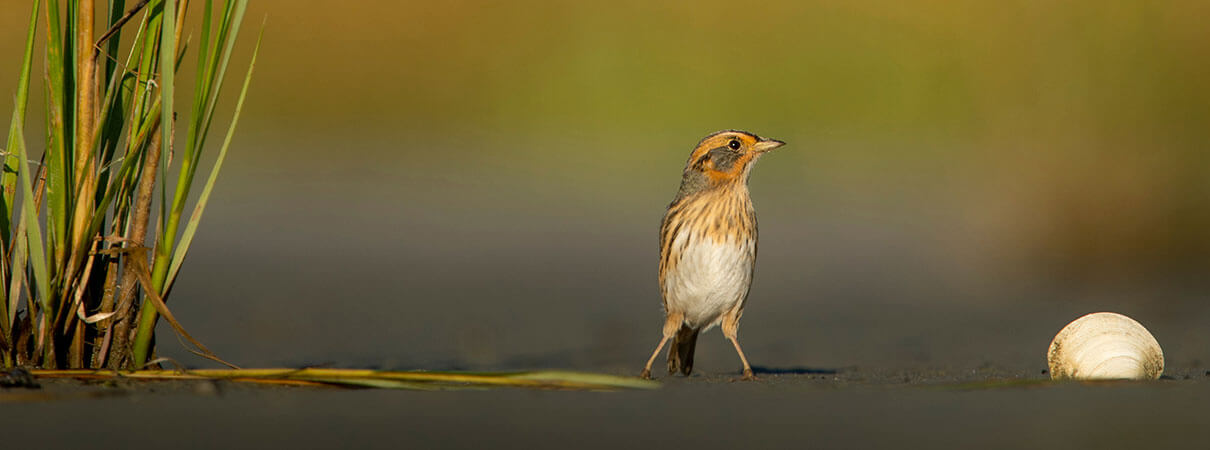
North America has more than 950,000 square miles of these dynamic ecosystems — an area larger than that of the states of Alaska and Texas combined. Wetlands can be found across the entire continent, from the boreal peat bogs of northern Canada to the mangrove swamps stretching down to Central America and across the Caribbean.
In this article, we'll cover three main types of wetlands: marshes, swamps, and peatlands. Each of these has its own special offerings for birds, and each faces conservation challenges and opportunities. Once you know what to look for, you might find that a local wetland, full of incredible birds, is closer than you think!
Marshes
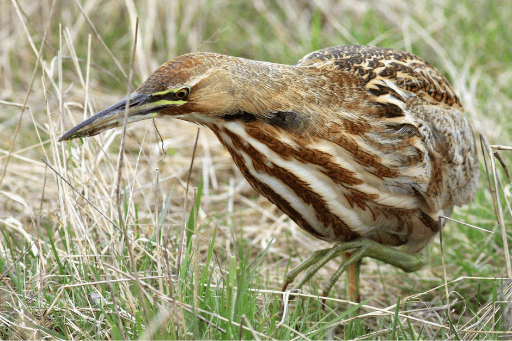
Marshes are the quintessential “wetlands.” These lush ecosystems are dominated by grasses and sedges that provide ideal cover for stealthy wading birds like the American Bittern. Their nutrient-rich waters and organic soils allow them to host an array of life, including the crustaceans and insects favored by marsh birds like the chicken-sized King Rail. Marshes are often — but not always — close to an ocean, river, or lake, and they are excellent at absorbing and storing flood waters from these systems. There are two broad subgroups of marshes: tidal and non-tidal.
Tidal marshes, as the name suggests, are adjacent to the ocean and influenced by the tides. They are usually saline or brackish, but occasionally contain fresh water. Tidal marshes are particularly prevalent along the low-lying Atlantic coast of North America and along the Gulf of Mexico. They can also be found on the Pacific side of the continent, including large expanses in northern Canada. These marshes serve as crucial rest stops along the Atlantic and Pacific Flyways — heavily trafficked avian migratory routes along both coasts used by hundreds of bird species and millions of individual birds each year.
Unfortunately, many of North America's tidal marshes are threatened by the dual pressures of coastal development and sea-level rise. However, when given the space to expand inland, marshes are dynamic and adaptable systems that can adjust to rising seas.
ABC staff members in the southeastern United States are hard at work helping to restore and protect coastal wetland habitats and the birds that depend on them. This includes monitoring and restoring marsh habitat crucial to the Endangered Black Rail and secretive Saltmarsh Sparrow.
Non-tidal marshes are — you guessed it — not influenced by the tides. These marshes are further inland, and usually consist of fresh water (though some are brackish, a mix of salt- and fresh water). Non-tidal marshes make up the majority of wetlands in the lower 48 states. Like tidal, coastal systems, non-tidal marshes are important rest stops for migrating birds.
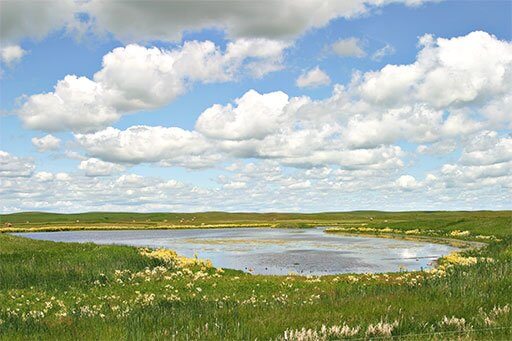
When glaciers receded from much of North America about 10,000 years ago, they left shallow depressions, or potholes. Today, these are dotted across the Great Plains of the United States and Canada. More than half of North America's migratory waterfowl — millions of birds, including Canvasbacks and Northern Shovelers — breed and nest in the wetlands of this “Prairie Pothole Region.” These scattered non-tidal marshes also provide key migratory stopovers for many birds following the Central Flyway migratory route, such as the Hudsonian Godwit.
Unfortunately, roughly half of prairie potholes — and up to 90 percent in some areas — have now been filled to make way for agricultural or commercial development. Saving and restoring wetlands in this region is considered highly important by bird conservation groups.
ABC is working to restore marshes in parts of North America where they have largely disappeared. This includes another important Central Flyway rest stop, the Big Bend region of Texas. Many wetlands associated with the Rio Grande have dried up or become disconnected from the larger river system, and bringing them back can aid migratory shorebirds like the Snowy Plover and Buff-breasted Sandpiper.
Swamps
Much like marshes, swamps are incredibly productive ecosystems that support a wide array of plant and animal life. Their nutrient-rich soils are always saturated and are often covered by standing water for at least part of the year. Like marshes, swamps act as buffers to soak up excess nutrients and floodwaters from nearby water systems. Unlike marshes, which generally appear open and “reedy,” swamps often contain many large trees and woody shrubs.
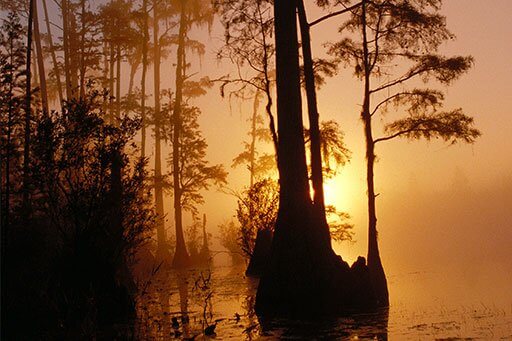
Two iconic swamp ecosystems illustrate the importance of swamps to birds. The Baldcypress-dominated bottomland hardwood swamps of the southeastern United States are home to cavity-nesters like the Prothonotary Warbler and wading birds such as the Wood Stork.
In many areas, bottomland hardwood swamps, with their forests of gum, oak, and Baldcypress, have been heavily impacted by unsustainable cutting. ABC works with the forestry industry in the Southeast to develop sustainable logging plans that accommodate nesting habitat for birds like the Red-headed Woodpecker and acrobatic Swallow-tailed Kite.
Mangroves are the salty seadogs of the tree world. In the subtropical and tropical coastal regions where they grow, these marine-adapted trees act as invaluable nurseries for shellfish and fishes, and provide a first line of defense against hurricane storm surges. In North America, mangrove swamps begin as far north as Florida and parts of the U.S. “mainland” Gulf Coast and carry on south through Central America and the Caribbean islands. They provide cover for stealthy tropical birds like the Mangrove Cuckoo and White-crowned Pigeon, and harbor many nesting wading birds, including the Reddish Egret and Roseate Spoonbill.
Peatlands
Peatlands, as their name suggests, are distinguished from marshes and swamps by their accumulation of “peat.” Organic matter builds up into spongey layers over time thanks to waterlogged soils where decay occurs very slowly. Canada's boreal peatlands make up the vast majority of these wetlands in North America.
Boreal peatlands are important to birds for two big reasons: They provide key habitat for a huge number of bird species, and they serve as natural carbon stores that help fight climate change. Migratory songbird species that use them for summer nesting include the Rusty Blackbird and the Common Yellowthroat. Smaller pockets of peatlands appear further south as well. In the Appalachian Mountains, peatlands support birds including the Swamp Sparrow, Wilson's Snipe, and Wood Duck.
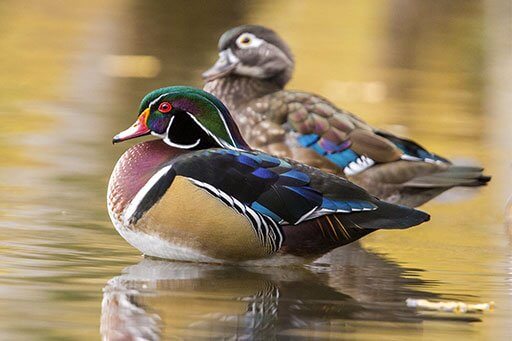
Peatlands can be divided into fens and bogs. Fens tend to occur in low-lying regions and get their moisture from groundwater that flows downslope. They help soak up floodwaters and filter nutrients to improve water quality. Sometimes, over time, fens can turn into bogs.
Bogs are similar to fens, but they have a shag-carpet-like layer of sphagnum moss that turns their waters acidic. Bogs are also the lowest-nutrient wetlands, fed primarily by rain rather than by streams or groundwater. Most plants can't handle this harsh environment, but certain hardy trees and shrubs thrive there. Cranberry and blueberry bushes have adapted to the challenges posed by bogs, and these provide tasty food to migratory birds like the Sandhill Crane.
Unfortunately, many bogs and fens have been filled in for development and agriculture, and their carbon-rich peat is heavily mined for fuel and fertilizer. Over time, these activities have diminished the number of fens and bogs in North America, shrinking this important avian habitat.
ABC and other conservation groups are working across North America to protect and restore the continent's marsh, swamp, and peatland habitats for the wetland birds that call these places home. There are plenty of ways for you to help wetland birds, too! You can make your home more bird-friendly for migrating wetland species, or tell lawmakers to prioritize wetland birds and their habitats. Visit ABC's website for more ideas about how to get involved.
 | Rachel Fritts is ABC's Writer/Editor. |


















































